Estonia gave the world Skype, Finland the legendary Nokia mobile phones, and Sweden the furniture giant Ikea. What did Slovakia give the world? At the beginning of this millennium, it looked like it would be SkyEurope Airlines.
On February 13, 2002, the airline made its first flight between Bratislava and Košice. What followed can be described as an air travel boom among Slovaks. However, SkyEurope Airlines will not commemorate the 20th anniversary of this event.On February 13, 2002, the airline made its first flight between Bratislava and Košice. What followed can be described as an air travel boom among Slovaks. However, SkyEurope Airlines will not commemorate the 20th anniversary of this event.
Despite big plans, a big crash followed relatively quickly.
A billion investment
The new airline brand first appeared in the media in late 2000. Over the following three years, the SkyEurope company wanted to invest SKK1 billion (€33.3 million) in Slovakia.
SkyEurope was established in September 2000. It was the founding shareholder of SkyEurope Airlines, with a 50.25 percent share. Its partner, which held a narrow minority share, was the Spanish airline SwiftAir.
According to the first announcments, SkyEurope was to start flying four or five aircraft on routes from Bratislava to London, Paris, Frankfurt and Milan. At these airports, the company reserved suitable time slots, which is a parameter that determines the success and occupancy of a flight.
SkyEurope presented itself as a low-cost airline from the very beginning, which was a novelty in Slovakia. SkyEurope wanted to fly Slovaks "for cheap money".
The SkyEurope project was also supported by the government. If the project worked out, Milan Rastislav Štefánik Airport in Bratislava would benefit from it. At the time, it was basically unused and forgotten by airlines.
"The airport is ready for more traffic. All that is needed is to break the barrier and show that it is possible to fly to Bratislava," Branislav Kvasnica, then director of the civil aviation section of the Transport Ministry, told the Pravda daily.
It must be said that Slovakia did not have ideal conditions to obtain new flights. It charged higher fuel prices than the surrounding countries and higher landing fees. In addition, airlines had to pay customs duties and VAT on imported aircraft.
Although Slovakia was a forgotten aviation corner from this point of view, the demand for flights was relatively strong. At the beginning of the millennium, it was estimated that 300,000 Slovaks a year used the services of the Vienna airport.
That is why SkyEurope saw potential in the Slovak market. "According to statistics, air transport accounts for only 1 percent of passenger transport in the country. In comparison, it is 20.8 percent in Slovenia, 15.4 percent in the Czech Republic, 13.5 percent in Hungary and 7.5 percent in Romania," the founder and SkyEurope's chair Christian Mandl said in early 2001.
SkyEurope expected to attract some passengers using the Vienna airport to Bratislava. According to the firm's calculations, up to 88 percent of them flew to another European city, mostly to London, Paris and Brussels.
Problems from the beginning
There was room for expansion in the European sky. Low-cost airlines, which later fundamentally changed traditional market conditions, were just getting started. Nevertheless, SkyEurope's original plan to launch its first flights in the spring of 2001 did not work out.
One of the reasons was differences between government officials on how to develop air transport in Slovakia. A memorandum with SkyEurope was to be part of this process.
"I did not finish reading a proposal, which was also delivered to us, and with the SARIO agency (Slovak Agency for Investment and Trade Development), which cooperates with SkyEurope, we agreed that they would prepare something that could be read to the very end. The submitted material is absolutely unacceptable," Vladimír Tvaroška, advisor to the deputy prime minister for the economy, complained to Pravda in August 2001.
The problem was that the content of the memorandum was one-sided, favouring the airline. According to the advisory, the state should have undertaken renting land for a symbolic amount of money or provide it free of charge to the company for the construction of its infrastructure. In addition to other benefits, SkyEurope was to receive a 10-year tax holiday. On the other hand, the airline did not make any commitments in the memorandum.
Interestingly, the state agency SARIO, according to its managers, had nothing to do with the draft document. "The memorandum presented in the media was not drafted by SARIO, but by SkyEurope itself, and is by no means a version that the government should deal with. This is a proposal that will be negotiated," said Jörgen Varkonda, director of the foreign direct investment division.
The state finally reached an agreement with SkyEurope's management. The reduction of air fares at the Bratislava airport formed the basis of the agreement, but the agreement also included exemption from taxes and duties on imported aircraft.
The government hoped the entire Slovak economy would benefit from the support of SkyEurope. The airline created 300 direct and another 1,500 indirect jobs. Its owners also spoke of the well-known multiplier effect of its business. "With one Slovak koruna invested in air transport, four Slovak korunas will return to the economy," Mandl said.
First in the region
After several delays, SkyEurope started its business on February 13, 2002, as the first low-cost airline in Central Europe. The Bratislava - Košice route could compete with trains. Tickets were sold from SKK990 (€33), with airport fees amounting to SKK1,200 (€40). In comparison, a first class trip on an IC train cost SKK750 (€25). However, the train trip lasted four hours longer.
SkyEurope offered tickets at exclusive discounts and at better prices, which made air travel much more affordable for Slovak tourists. And not just on domestic routes.
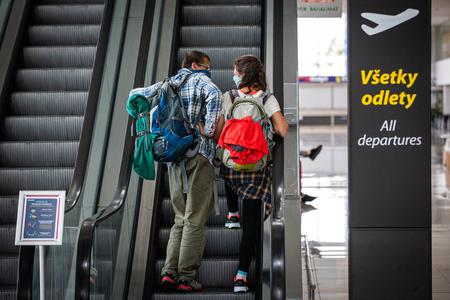
The portfolio of the Slovak low-cost airline gradually expanded. The company also started flying from Bratislava to Zurich, Prague and Munich. And in addition to Bratislava, the company also started to operate flights from Košice and Poprad.
While passengers were happy, other airlines became nervous. A few days after SkyEurope connected Bratislava with Košice, the prices on this route were also reduced by Slovak Airlines, which had gained status as a national air carrier during the reign of PM Vladimír Mečiar. The carrier was indebted and went bankrupt in 2007. The company sold last minute tickets even SKK 90 (€3) cheaper than SkyEurope.
Price lists were also adjusted by CSA (Czech Airlines), and the head of Austrian Airlines also identified the new Slovak competition as a problem. It was not just the price they had to respond to in Vienna. The Austrians did not like the marketing of the new company, which described the Vienna airport as "crowded" in promotional materials. The Austrians even threatened the Slovaks with a lawsuit.
SkyEurope flew Slovakia, but not only
One year after the launch of the first route, SkyEurope changed its shareholder structure. The investment funds Slovak Post Privatisation Fund, Euroventures Danube and East Fund Management joined the airline. The European Bank for Reconstruction and Development, the European Union and the Dutch bank ABN Amro were behind these funds.
New investors increased the volume of investments intended for the purchase of new aircraft and the opening of other destinations. SkyEurope grew and expanded from year to year, gradually opening bases in Budapest, Krakow, Warsaw, Prague, and Vienna in 2007.
The Bratislava airport especially enjoyed the success of SkyEurope. Between 2004 and 2006, it saw unprecedented increases in passengers. Before the arrival of the low-cost airline in 2001, it handled less than 300,000 passengers. In 2006, it was 2 million passengers. And in 2008, a record 2.2 million passengers passed through the gates of Milan Rastislav Štefánik Airport in Bratislava.
The Slovaks were not the only ones who used the airport. For example, Britons began to enjoy Bratislava's good connections with the British Isles. Some saw Slovakia, especially its capital, as a destination with cheap beer and a diverse range of other pleasures.
In 2003, a Guardian reporter made the trip to Bratislava. In his article, he advised readers to forget about New York and go shopping in Bratislava.
In 2004, SkyEurope acquired additional investors who poured another €10 million into the airline. Mandl enjoyed recognition in Slovakia and abroad. The Austrian Business World Magazine awarded him the 2004 Entrepreneur of the Year award.
In 2005, SkyEurope announced the purchase of 16 Boeing 737-700 aircraft, with an option for another 16 aircraft by 2010. "The ordered aircraft have a list price of $880 million. When the second part of the delivery takes place, the company's assets will be expanded by aircraft worth $1.76 billion," said Mandl. SkyEurope then operated 41 routes to 22 European destinations.
Problems surface
In 2005, SkyEurope entered the Vienna and Warsaw stock exchanges in order to obtain funding for further expansion. But although the numbers of its passengers, planes and routes were growing, in terms of financial indicators, it produced loss after loss.
In 2006, Mandl told the Austrian daily Der Standard that SkyEurope would be in the black the next year. Cost reductions should have taken care of that. "We need some more time to make a profit," the airline chief said.
However, the desired change did not come. Probably for this reason, in June 2007, there was a personnel change in management. Jason Bitter became CEO.
Under his leadership, there was a hint that the airline's finances would improve. In the last quarter of its budget year 2007, which always ended in September, it reported a profit of €14.3 million. This was also due to a reduction in operated flights, jobs and other costs.

It was not enough. At the end of summer 2008, SkyEurope's CFO Nick Manoudakis admitted that the carrier would generate a loss again. "It could be higher, but it is not, because we have made great progress in reducing additional costs," he said, adding that 2009 would be a turning point.
Even the new majority shareholder did not help achieve black numbers. York Capital Investment Group poured a loan of €10 million into the company in September 2008.
At that time, information about SkyEurope's existential problems was leaking to the media. For example, the Austrian daily Kurier wrote that SkyEurope's departures from the United Kingdom were delayed due to unpaid airport charges. The Vienna airport also admitted arrears. "We have some problems, we are solving them," Bitter said.
In October 2008, SkyEurope agreed on an alliance with the Italian low-cost airline Myair. Myair, however, also faced financial problems and eventually went bankrupt a few weeks before SkyEurope.
The fall
Just days after announcing the alliance with Myair, SkyEurope published the results for fiscal 2008. It reported a record loss of €60 million. The icing on the cake was that the company's management asked employees to give up part of their salaries and allowances.
In 2009, the dream of a large European company in Slovakia fell apart like a house of cards. The economic crisis complicated SkyEurope's situation. Earlier that year, the media reported that a leasing company had seized the airline's 10 aircraft. The firm had only five machines left and had to deal with outages by renting aircraft from other companies.
Rumours of insolvency began to appear. "SkyEurope Airlines is here, flying, fulfilling its obligations to its clients without cancelling any flights. Specific actions are the answer of SkyEurope Airlines," the spokesperson of the carrier Tomáš Kika told Rádio Slovensko in January 2009.
Just a few days later, however, SkyEurope lost another aircraft. Over the next few months, there was more information about delayed or even cancelled flights. The volume of passengers decreased, sales decreased, losses increased.
In the spring of 2009, SkyEurope was no longer the strongest carrier at the Bratislava airport. This position was taken over by Ryanair.
When creditors began to chase SkyEurope, the company tried to restructure itself. "The company will gain the time needed to fully realise the potential of the bases, routes and its network, and for debt restructuring. It will make the airline more attractive for any new investment," the firm said.
Again, just hours later, a SkyEurope airplane was seized at the Paris airport due to debts of the airline.
At the beginning of July 2009, SkyEurope CEO Jason Bitter resigned. He was replaced by CFO Nick Manoudakis, but he achieved no miracle either.
The End
When, in mid-August, it surfaced that Vienna's airport stopped servicing SkyEurope for rising debts, it was clear that its crash was inevitable. It happened on the last day of August 2009. A restructuring administrator asked the court to declare bankruptcy.
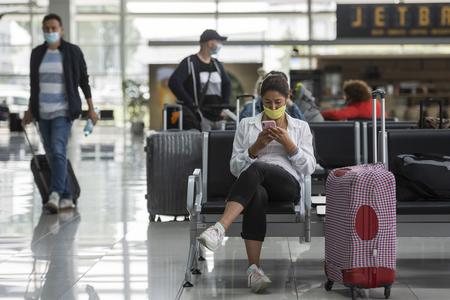
"SkyEurope Airlines regrets to inform passengers, employees and business partners that it has cancelled all operations due to bankruptcy declared by the restructuring administrator (...) The administrator stated that the company does not have sufficient funds to maintain operations," the carrier said.
Debts were not the only thing that remained after SkyEurope's bankruptcy. Thousands of passengers in foreign destinations who could not get home also found themselves in trouble. It turned out that the airline managed to sell 280,000 tickets that never took place.
There is only one first love
SkyEurope flew 14 million passengers during its existence. In its best times, it was probably the most famous Slovak brand. But it turned out that the company did not stand on solid management or economic fundamentals.
"The airline couldn't be managed worse," Niki Lauda, a former F1 driver and aviation businessperson, said a few months before SkyEurope crashed.
Either way, SkyEurope will go down in history as the firm that managed to boost air travel in Slovakia. Although its story ended infamously, it will remain the first flying experience for many Slovak travellers.
© Index


 The Slovak top model Adriana Sklenaříková-Karembeu christens a new Boening with French champagne in 2006. (source: TASR)
The Slovak top model Adriana Sklenaříková-Karembeu christens a new Boening with French champagne in 2006. (source: TASR)
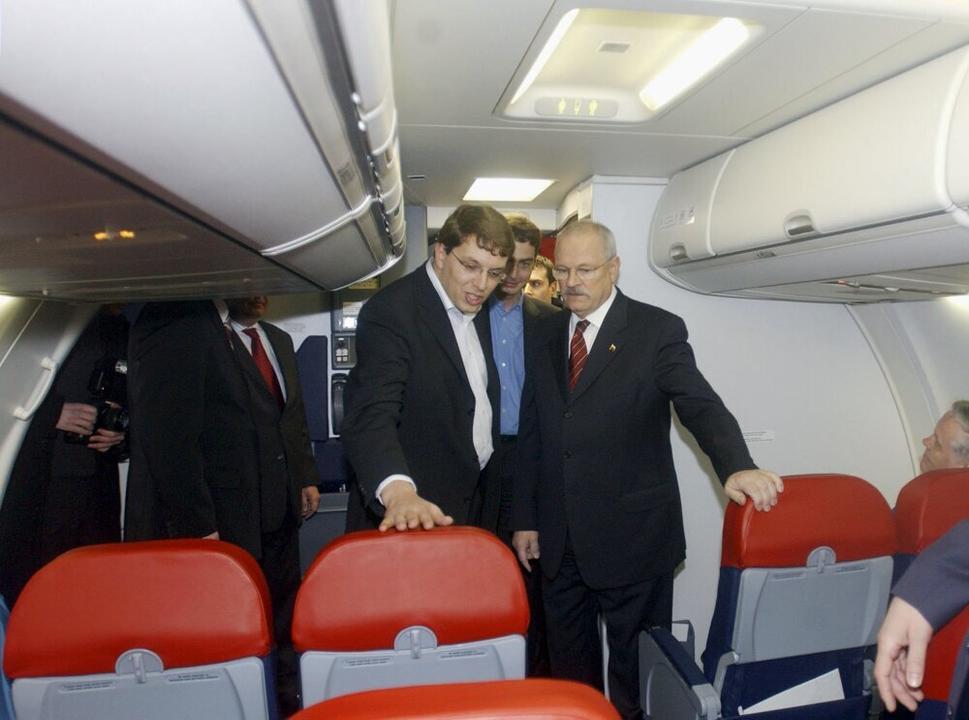 The then President of the Slovak Republic Ivan Gašparovič (right) with the Chair of the Board of Directors Christian Mandl (left) during the presentation of the new Boeing 737-700 New Generation aircraft in 2006. (source: TASR)
The then President of the Slovak Republic Ivan Gašparovič (right) with the Chair of the Board of Directors Christian Mandl (left) during the presentation of the new Boeing 737-700 New Generation aircraft in 2006. (source: TASR)
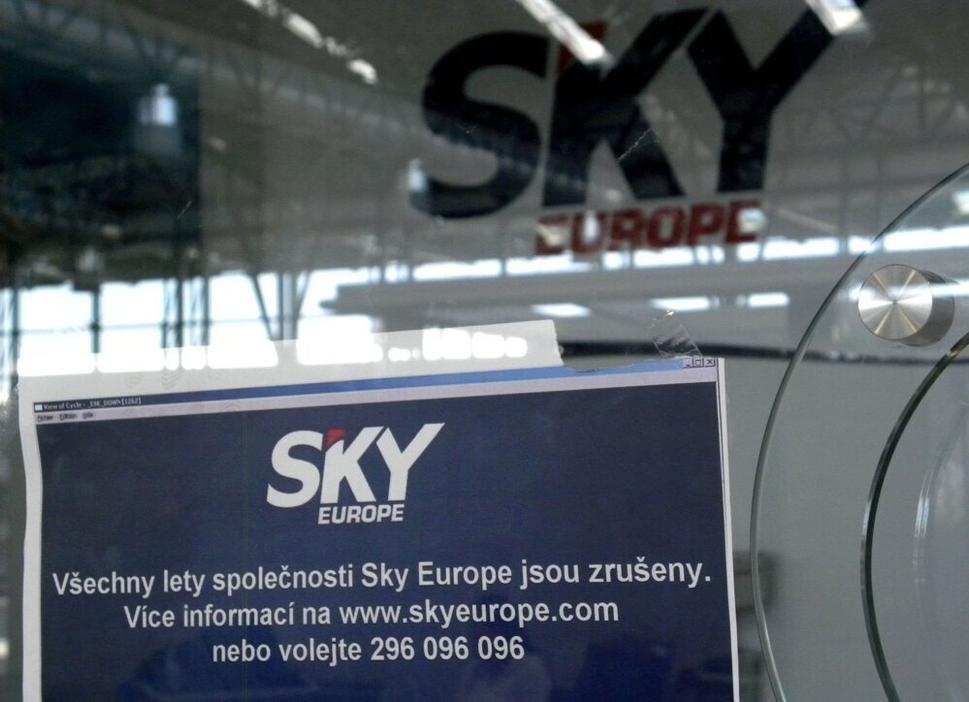 All SkyEurope flights have been cancelled, a sign reads. (source: TASR)
All SkyEurope flights have been cancelled, a sign reads. (source: TASR)
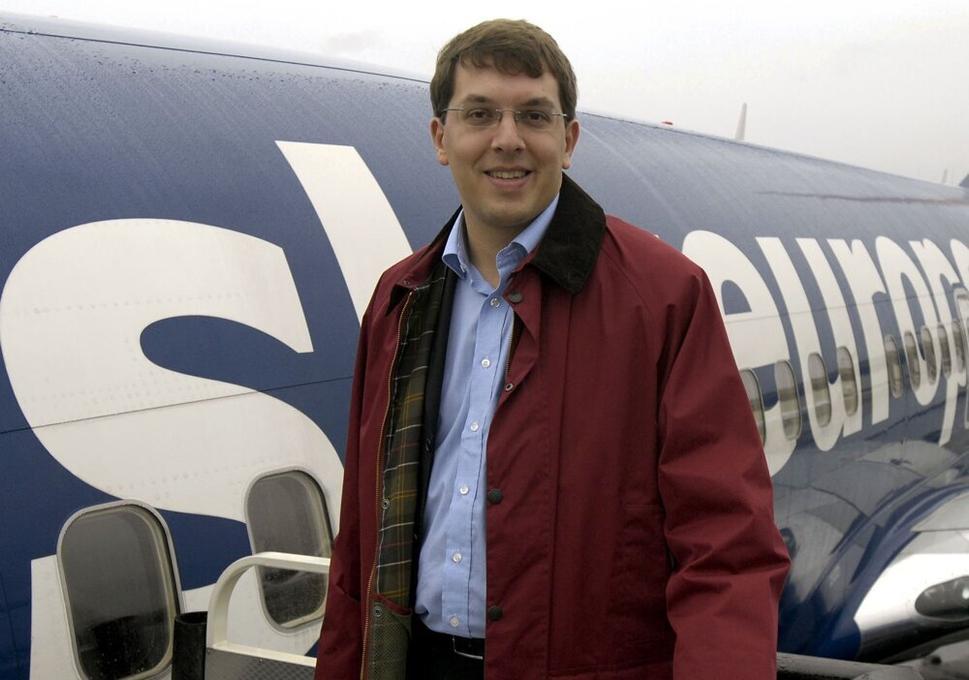 SkyEurope co-founder Christian Mandl. (source: TASR)
SkyEurope co-founder Christian Mandl. (source: TASR)
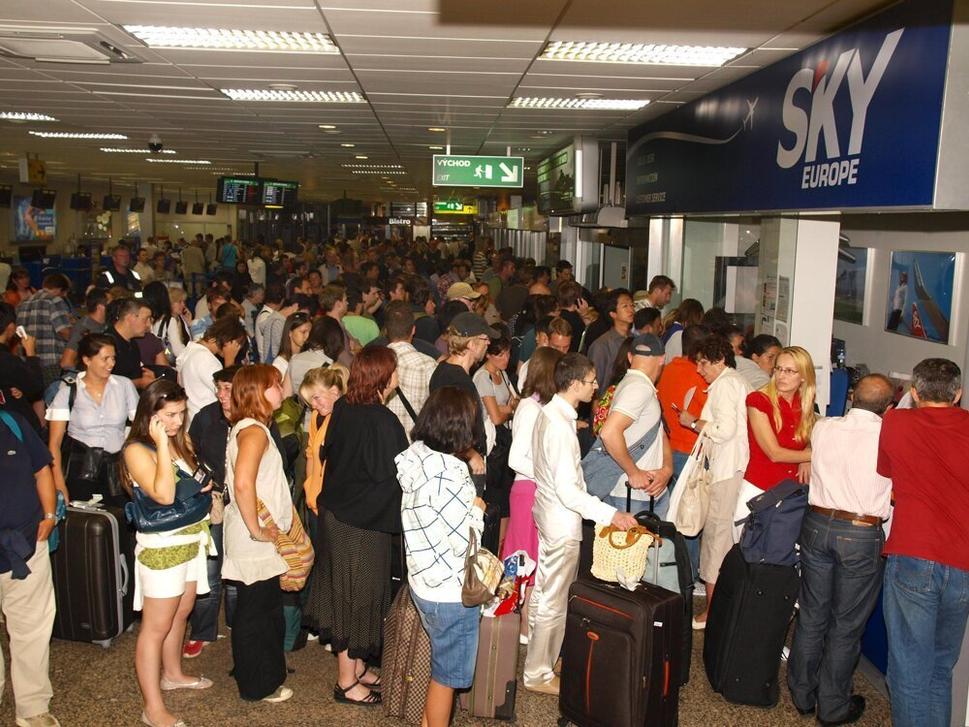 Dissatisfied passengers are waiting in the departure hall at Bratislava's Milan Rastislav Štefánik Airport on August 31, 2009, when SkyEurope declared bankruptcy. (source: TASR)
Dissatisfied passengers are waiting in the departure hall at Bratislava's Milan Rastislav Štefánik Airport on August 31, 2009, when SkyEurope declared bankruptcy. (source: TASR)